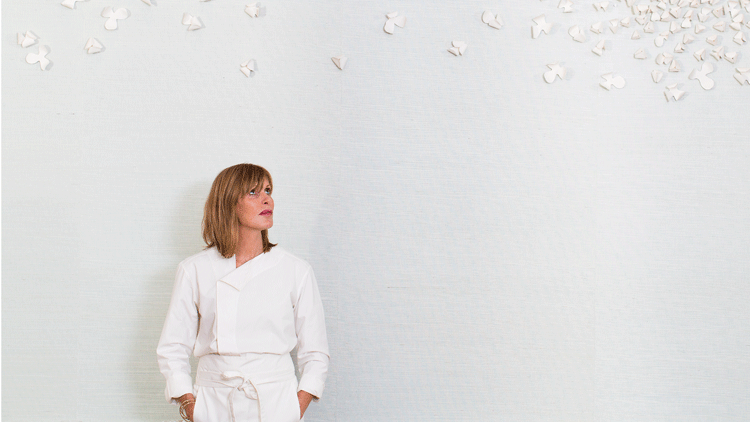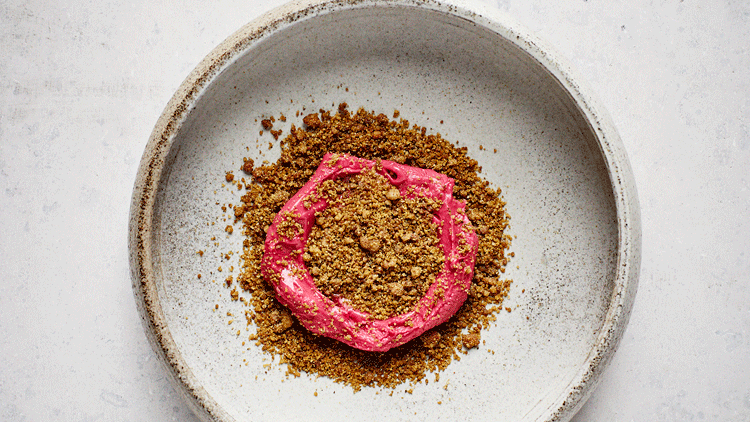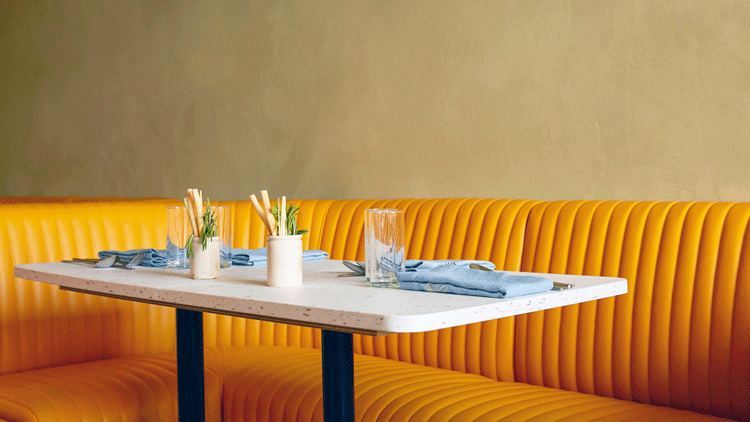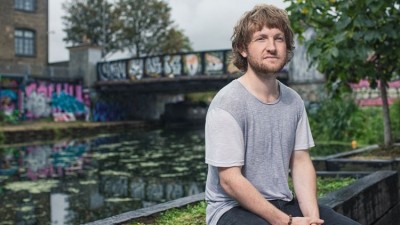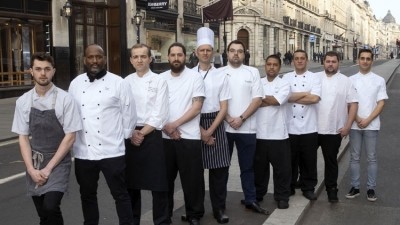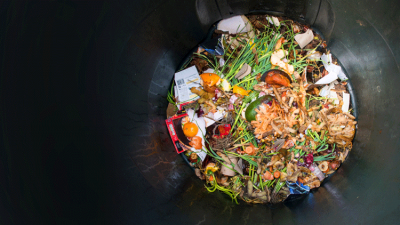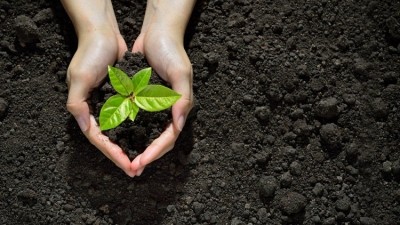Talking trash: Tackling the industry's dirty little secret
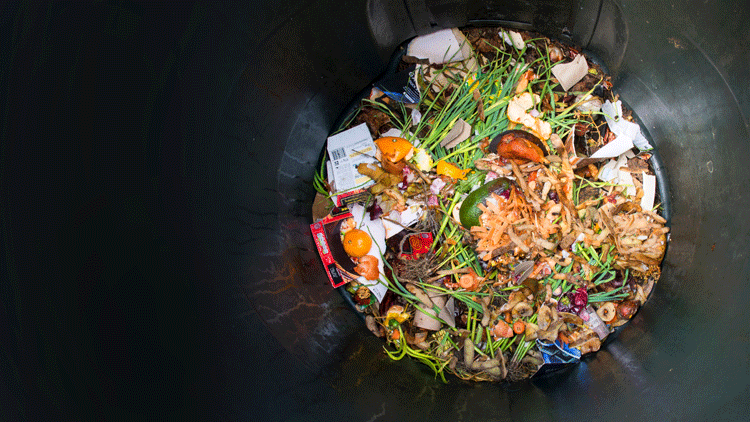
Food waste is an epidemic. An eye-watering 600,000 tonnes of the stuff (a third of all that is produced) is wasted each year in the UK, a frankly ridiculous figure that is becoming harder and harder to ignore.
For every meal eaten in a UK restaurant, nearly half a kilo of food is wasted – through preparation, spoilage and what gets left behind on diners’ plates. Food waste costs UK restaurants around £682m per year according to WRAP (Waste and Resources Action Programme), which adds a financial slant to an environmental problem that seems so simple to fix – after all, it is mostly made up of things like potato peelings, carrot tops and chicken bones.
Tackling the problem is something of a work in progress for the restaurant industry and the wider food world. Many businesses are invested and are trying to make positive changes, but many more are struggling to get fully on board.
Last year, Unilever launched a ‘wise up on waste’ app, which allows businesses to see how much waste they produce. The rationale is that if businesses could clearly see what kinds of food are being wasted and why, then they can adapt their processes.
In the same vein, FoodSave, a project run by the Sustainable Restaurant Association (SRA) in London from 2013 to 2015, helped participating restaurants save around £6,000 per year by reducing waste, using surplus food and sending more waste to compost. Some, like small neighbourhood restaurant group Foxlow, saved much more – in Foxlow’s case, the equivalent of £27,200 per year.
Chefs including Massimo Bottura, Skye Gyngell and Dan Barber have all been outspoken about the fact that a third of the world’s food is being wasted, and have played a key role in making the issue a talking point for the trade and public alike.
The saying goes ‘one man’s trash is another man’s treasure’, and although it isn’t usually meant in relation to restaurants’ food waste, it can be fittingly applied to the conversation. Where one chef may throw some parts of their produce away, another may treat it like a prized ingredient.
Blue Skye thinking: Spring restaurant offers a special waste menu
Food schemes not being WastED
From February through to April of this year, US chef Dan Barber, of Blue Hill in New York, held his ‘WastED’ pop-up on Selfridges’ rooftop. Using by-products from retailers, producers and suppliers otherwise destined for the bin, the pop-up aimed to highlight how ingredients that are often thrown away can actually be used to create high-end dishes.
“Being presented with a whole new palette of ingredients — that’s catnip for a chef,” said Barber at the time, proving others wanted in on the action by hosting guest chefs, including Pierre Koffmann, Nuno Mendes, Jason Atherton and Tom Kerridge.
Massimo Bottura followed up on the success of WastED by opening a London iteration of Refettorio Ambrosiano, his Milan-based community kitchen. Bottura’s Refettorios are community kitchens run by his non-profit organisation Food for Soul. The Felix Project charity supplies the ingredients, which otherwise would have ended up in the bin as waste, and the kitchen teams up with a different British chef every day to produce free or heavily subsidised healthy meals for people who are struggling. They also teach local cooks how to create more interesting meals with surplus food.
More than 30 leading British and international chefs accepted the call to action from Bottura to cook in the Refettorio, including: Alain Ducasse, Angela Hartnett, Ashley Palmer-Watts, Brett Graham, Bruno Loubet, Clare Smyth, Claude Bosi, Daniel Boulud and Jason Atherton.
Skye Gyngell’s London restaurant, Spring, trialled a ‘Scratch’ concept menu last March. This involved misshapen vegetables and leftovers from the restaurant’s other menus were re-purposed before
being served as a three-course, pre-theatre set meal.
The aim was to cut waste, and to “draw attention to the fact that this produce, despite its appearance, is still truly delicious,” according to the Australian-born chef. Dishes include soups made from root vegetable scraps and trimmings; home-made pasta baked with cheese, and the previous day’s bread turned into bread pudding.
Scratch was so well received that Gyngell has kept the menu running daily, indefinitely, and it is now so popular that diners must book in advance to secure a place. For the sustainability movement, this is another demonstration of how packaging something that was once considered trash can get diners excited and put bums on seats.
Throw terminology in the bin
Another solution to restaurants’ food waste problems could be to change the way ‘waste’ is talked about. Former Noma chef de cuisine and Amass chef patron Matt Orlando has previously called on the industry to change the way it talks about food waste, believing chefs will struggle to inspire the wider public to reuse more from their kitchen if they continue to refer to recycled ingredients as ‘trash’.
Orlando turns as much leftover produce as he can from his highly rated Copenhagen restaurant into new dishes and ingredients and, since opening, has reduced the amount of food thrown in the bin by an impressive 75%. “One thing I’ve really learned over the past two years is if we want this way of approaching produce to become the norm, it’s really important we learn a new language to talk about it,” he said, during a speech at the Food On The Edge conference in Galway in October.
Too good to go to waste: Beet sherbert, rhubarb and salted grains at Copenhagen's Amass
“We need to stop calling this waste cooking or trash cooking because if we keep using those words, that’s all the stuff is going to be. [These ingredients] are just another product that we’re working with.” Orlando uses ingredients in creative ways, such as frying fish bones as snacks, making sauces from fermented bread, and creating vegetable crisps from leftover root vegetables.
In the past, the concept of cooking with waste food might have conjured up images of bin-diving squatters, raiding the industrial dumpsters outside Iceland for ingredients to make a dodgy vat of chilli.
It certainly wouldn’t bring to mind any fine-dining restaurants, less likely still those with the edgy credentials of Cub, the result of a partnership between ‘Mr Lyan’ (Ryan Chetiyawardana, owner of Super Lyan and White Lyan) and Douglas McMaster, chef-patron of zero-waste restaurant Silo in Brighton.
The first foray into dining for Mr Lyan, Hoxton-based Cub is trendy, serving small plates (or glasses because someNot a ‘courses’ comprise drinks, not food) made from unusual ingredients. It turns would be waste ingredients into fine dining, and grows as many ingredients as possible in-house, without a single pair of hemp-knit trousers in sight.
“We want to show that sustainability need not be about sacrifice, so we don’t want to be too worthy or heavy handed with the messaging,” Lyan told magazine Foodism. “I didn’t think that luxury needed to be wasteful. Opulence doesn’t have to be crass and wasteful. It works from both a simple waste perspective, but also from an ingredient perspective. If you’re using things, why are you throwing away over half of it? It’s never made sense to me.”
Lyan’s business partner Douglas McMaster believes that while in an average restaurant up to 50% of all food goes to waste, in a fine-dining restaurant that figure is closer to 80%. While this is hopefully an exaggeration, it does highlight the fact that top-end restaurants are among the worst offenders when it comes to wastage.
Not a single pair of hemp trousers in sight: Hoxton's Cub restaurant
Unusable remains
At its simplest level, waste minimisation means not throwing good food away. There are a plethora of things restaurateurs can do to help aid sustainability, and many are already getting creative – both in terms of actual practice, and in making it appealing to the customer.
But what about the food that can’t be eaten? There comes a point at which the last possible part of an ingredient has been used, and what is left over cannot be shoehorned into a dish, no matter how hard a chef might try.
At Trinity Restaurant in Clapham, Adam Byatt is working with ‘food waste farmer’ Igor Vaintraub (CEO of Indie Ecology) to ensure 100% of his restaurant’s leftovers are dealt with in an eco-friendly way.
All of Trinity’s food waste goes into bins and Vaintraub collects it every morning to take it to Brentford and turn it into compost in a fortnight. The restaurant buys around 10,000 seeds for things it wants to grow, sends them to him, and twice a week he comes back with crates of produce.
“We do it because we think we have a responsibility to show that working in an environmentally responsible way is really important as a restaurateur,”says Byatt. “We buy £1m worth of food each year, and we have 1% wastage. Although that’s tiny, when you think about how much we buy, that’s is a lot of food wasted.”
As these forward thinking chefs demonstrate, a little creative thinking can reduce waste significantly. It’s important to share best practice too – the industry should not be afraid to talk trash.
